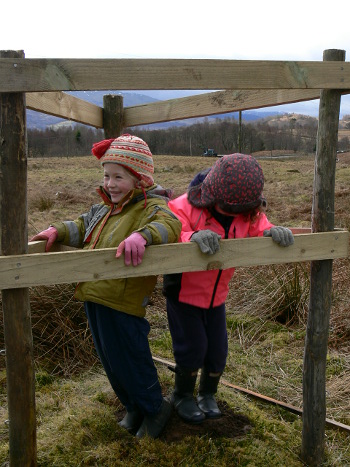 The iconic Scots Pine is making a return to the lower slopes of Ben Lawers thanks to the combined efforts of the National Trust for Scotland, some local young naturalists and small group tour operator Rabbie’s.
The iconic Scots Pine is making a return to the lower slopes of Ben Lawers thanks to the combined efforts of the National Trust for Scotland, some local young naturalists and small group tour operator Rabbie’s.
Local children from the Killin Green Team planted 15 individually protected Scots Pines at Cragganester on the Ben Lawers National Nature Reserve which is in the care of the National Trust for Scotland. Around 50 trees will be in place by the end of the project.
Ben Lawers Property Manager Helen Cole said: “It is fantastic to have the next generation of conservationists helping us to plant the next generation of Scots Pine. These young people will be planting trees that, we hope, will still be standing strong in over 100 years time.”
The 1769 map of the area shows that Scots Pine were planted within three enclosures on the lower slopes of Ben Lawers , but only a handful remain. The stumps of those which were felled over the years remain together with casualties of recent gales. The newly-planted trees come from a local seed source and will, according to Property Manager Helen Cole, be recreating some of the features of a former landscape, giving visitors an idea of how the area might have looked in the 1700s.
The work has been funded by tour operator Rabbie’s who have funded several previous projects on Ben Lawers over the last few years and have actively contributed to one by providing a minibus full of volunteers.
Hazel Rickett, Managing Director at Rabbie’s said: “Rabbie’s are delighted to be able to fund this and other projects, NTS do a fantastic job at preserving and restoring our environment for future generations to enjoy and actively encourage the engagement of communities and children, something that we are also passionate about.”
Planting at Cragganester has been a more delicate operation than usual, due to the fascinating archaeology of the area, which contains extensive evidence of previous dwellings on the hillside, and special consent was needed to enable the planting to go ahead.
Head of Archaeology, Derek Alexander said: “Ben Lawers is fortunate in not only having a wealth of archaeological remains that date back to the period of the agricultural improvements, at the end of the 18th century, but much of this is also associated with excellent documentary evidence from the estate records. The Trust has over the years undertaken detailed research into the history of the area and it is good to see the replanting work using this information to inform its tree planting schemes.”
The conservation charity has recently established an archaeological trail at nearby Kiltyrie which aims to bring the landscape and its often overlooked features to life for visitors, pointing out the signs of those who lived and worked the land centuries before.
The pine planting is the latest in a series of projects to restore native tree species in the Killin and Ben Lawers area which is renowned for its outstanding range and diversity of vegetation, especially arctic-alpine species. The reserve is important for the very large number of nationally rare or scarce montane plant species that it supports, including vascular plants, lichens, and bryophytes. It also has an outstanding diversity of invertebrates with many nationally rare or notable species.
